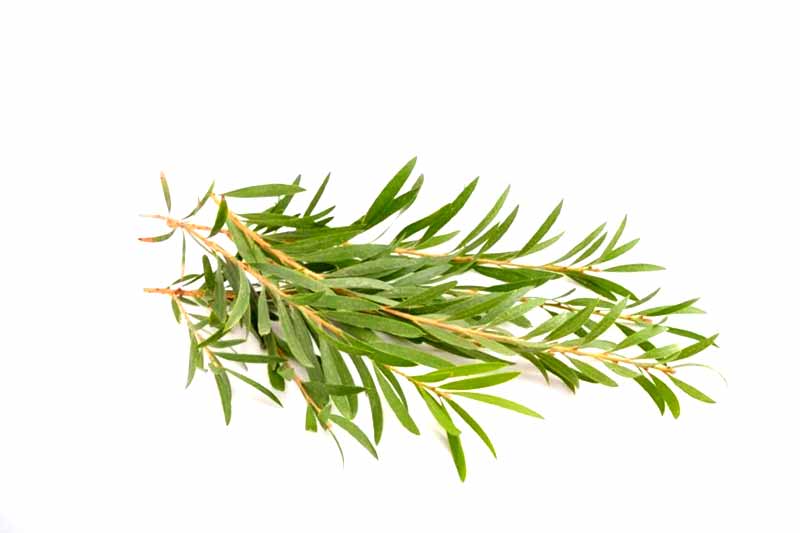Tea tree oil, derived from the Australian tea tree, boasts a rich history and diverse applications. Known for its potent antiseptic properties, this essential oil has found a place in various industries, from healthcare to cosmetics. Its unique chemical composition contributes to its effectiveness, making it a subject of ongoing research and discussion.
This comprehensive exploration delves into the fascinating world of tea tree oil, examining its botanical origins, key chemical components, and diverse uses. We’ll also uncover the historical context surrounding its use in traditional medicine and evaluate its effectiveness in comparison to other essential oils.
Introduction to Tea Tree Oil
Tea tree oil, derived from the leaves of the *Melaleuca alternifolia* tree, is a versatile natural product. Commonly used for topical applications, it boasts a long history of traditional medicinal use. Its distinctive aroma and potent chemical components contribute to its diverse range of purported benefits.
This oil’s popularity stems from its antimicrobial and anti-inflammatory properties. While more research is needed to fully understand its mechanisms of action, tea tree oil is widely recognized for its effectiveness in treating various skin conditions and promoting wound healing.
Botanical Origin and Common Uses
Tea tree oil is extracted from the *Melaleuca alternifolia* tree, native to Australia. It’s known for its aromatic qualities and is frequently employed in topical treatments, such as skincare products, due to its antimicrobial and antiseptic properties. Traditional applications include wound care, and its use is also observed in aromatherapy and various personal care products.
Key Chemical Components
The efficacy of tea tree oil largely depends on its complex chemical composition. The oil is rich in monoterpenes, which are volatile organic compounds responsible for its characteristic scent and purported medicinal effects. These components interact with each other and potentially with the target tissues to exert their effects.
Table of Key Components
| Name | Chemical Formula | Source | Brief Description |
|---|---|---|---|
| α-Terpineol | C10H18O | Monoterpene | A key component contributing to the aroma and potential medicinal properties. |
| α-Terpinene | C10H16 | Monoterpene | Known for its antibacterial and antiviral properties. Often linked to tea tree oil’s antiseptic actions. |
| 1,8-Cineole | C10H18O | Monoterpene | This component contributes to the antiseptic and anti-inflammatory properties often attributed to tea tree oil. |
| γ-Terpinene | C10H16 | Monoterpene | Demonstrates antibacterial activity and may play a role in tea tree oil’s therapeutic potential. |
Historical Context
Indigenous Australians have used tea tree oil for centuries in traditional medicine, utilizing it for treating various ailments. Evidence suggests that the oil’s efficacy was recognized and employed for wound healing and other medicinal purposes. This historical use underscores the potential of tea tree oil, and modern research seeks to validate and further explore its therapeutic properties.
Properties and Characteristics

Tea tree oil, derived from the leaves of the Australian tea tree, possesses a unique blend of physical and chemical properties that contribute to its diverse applications. Understanding these properties is crucial for safe and effective use. Its distinctive characteristics also set it apart from other essential oils.
The oil exhibits a range of properties that affect its use and safety profile. From its appearance and odor to its potential interactions with other substances, careful consideration of these properties is essential. This section delves into the physical and chemical characteristics of tea tree oil, highlighting its potential benefits and safety concerns.
Physical Properties
Tea tree oil is typically a pale yellow to light golden liquid. Its distinctive odor is often described as camphoraceous, somewhat medicinal, and slightly pungent. The characteristic aroma is a notable factor influencing its use and acceptance in various applications. The boiling point of tea tree oil is relatively high, contributing to its stability during various processes.
Safety Considerations
Potential skin reactions, such as irritation or allergic responses, can occur with tea tree oil. Therefore, it’s crucial to perform a patch test before applying it to large areas of skin. Interactions with other medications are another important factor to consider. Always consult a healthcare professional before using tea tree oil, especially if you are pregnant, breastfeeding, or have any underlying health conditions. Precautions are paramount when using this powerful essential oil.
Effectiveness Compared to Other Essential Oils
Tea tree oil is known for its antimicrobial properties. While other essential oils, such as lavender or peppermint, possess their own unique characteristics and applications, tea tree oil stands out in its efficacy against certain microorganisms. However, the comparative effectiveness of various essential oils depends on the specific application and the target microorganism. Further research is needed to comprehensively compare the effectiveness of various essential oils across a wider range of applications.
Table of Properties
| Property | Value | Unit | Description |
|---|---|---|---|
| Appearance | Pale yellow to light golden | Visual | The liquid’s color ranges from pale yellow to a light golden hue. |
| Odor | Camphoraceous, medicinal, slightly pungent | Olfactory | The distinctive smell of tea tree oil is often described as having a camphoraceous, slightly medicinal, and pungent quality. |
| Boiling Point | 180-190 | °C | The temperature at which the oil transitions from liquid to gas, contributing to its stability during processing and application. |
| Density | 0.90-0.93 | g/cm³ | The mass per unit volume of the oil. |
Applications and Uses
Tea tree oil’s versatility extends far beyond its medicinal properties. Its potent antimicrobial and antiseptic qualities make it a valuable ingredient in numerous industries, from healthcare and cosmetics to agriculture and even household products. This section explores the diverse applications of tea tree oil, its methods of use, and its role in aromatherapy.
Topical Applications
Tea tree oil’s topical applications are extensive, often leveraged for its ability to combat various skin conditions. The key to safe and effective use lies in proper dilution and application methods. Concentrated tea tree oil can cause skin irritation; therefore, diluting it with a carrier oil, such as jojoba or almond oil, is crucial for topical use.
- Dilution Ratio: A common dilution ratio is 1-2% tea tree oil to carrier oil, ensuring a soothing and effective treatment without adverse reactions. This ratio allows for the benefits of tea tree oil to be harnessed while minimizing potential irritation.
- Application Methods: Topical application methods range from direct application to compresses and even massage. For example, a few drops of diluted tea tree oil can be gently applied to affected skin areas. Applying a warm compress soaked in a diluted solution can offer additional relief for inflamed or infected areas. In massage therapy, diluted tea tree oil can be incorporated into a massage cream for soothing and invigorating effects.
Aromatherapy Applications, Tea tree oil
Tea tree oil’s aromatic properties have made it a popular choice in aromatherapy. Inhaling the vapors of tea tree oil can offer potential benefits for respiratory health and overall well-being. The practice of aromatherapy with tea tree oil often involves diffusing the oil, allowing its therapeutic fragrance to fill a room.
- Inhalation: Inhaling tea tree oil vapors can potentially aid in respiratory conditions and promote a sense of calm. Proper dilution is critical when using tea tree oil in a diffuser, following the manufacturer’s instructions to avoid potential respiratory irritation.
- Potential Benefits: While more research is needed, some users report that tea tree oil aromatherapy can contribute to relaxation, reduce stress, and potentially improve mood. The aromatic compounds released through inhalation may interact with the limbic system, impacting emotions and stress responses.
Industrial Applications
The diverse applications of tea tree oil extend across various industries. Its potent properties make it a sought-after ingredient in both personal care and industrial settings.
| Application | Method | Benefits | Precautions |
|---|---|---|---|
| Healthcare | Topical application, wound care | Antimicrobial, antiseptic, promotes healing | Dilute before topical use, avoid contact with eyes |
| Cosmetics | Skincare products, hair care | Antiseptic, antibacterial, antifungal properties | Patch test before widespread use, potential for allergic reactions |
| Agriculture | Plant protection, pest control | Effective against various plant diseases and pests | Follow label instructions carefully, potential for plant damage with improper use |
| Household Cleaning | Cleaning solutions, disinfectants | Antimicrobial properties | Dilute before use, avoid contact with eyes and skin |
Conclusive Thoughts

In conclusion, tea tree oil stands out as a versatile and potent natural remedy with a wide range of applications. Its unique chemical composition and historical significance make it an intriguing subject for further investigation. While acknowledging potential safety considerations, the benefits and applications of tea tree oil are undeniable. This exploration provides a foundation for understanding the value of this remarkable essential oil.
Tea tree oil’s got a reputation for tackling skin issues. It’s a popular ingredient in skincare routines, especially for men, as part of a broader skincare for men approach. This versatile oil can help with acne and blemishes, making it a worthwhile addition to your routine.
Tea tree oil is a popular natural remedy for various skin issues. For enhanced sun protection, incorporating sun protection tips like using sunscreen with a high SPF is crucial. It’s worth noting that tea tree oil can also be used as a supplementary tool for sun-related skin irritations, acting as a soothing agent.